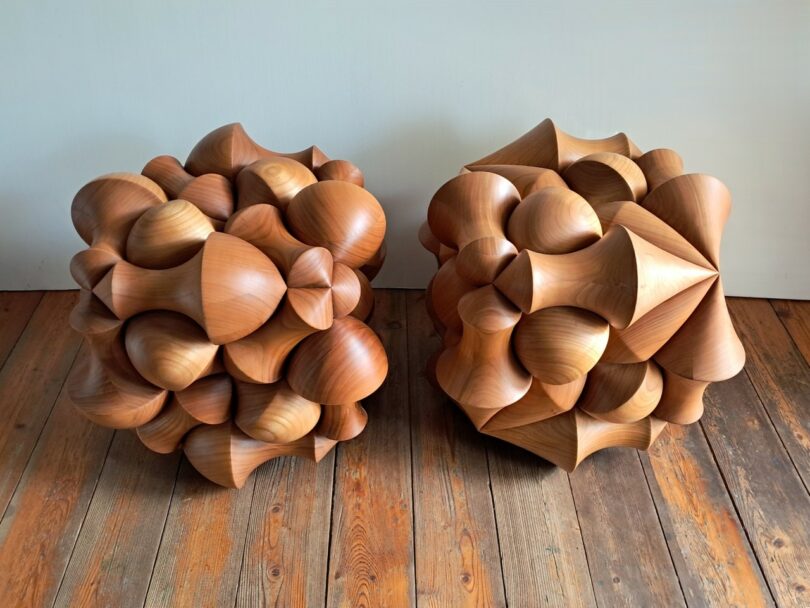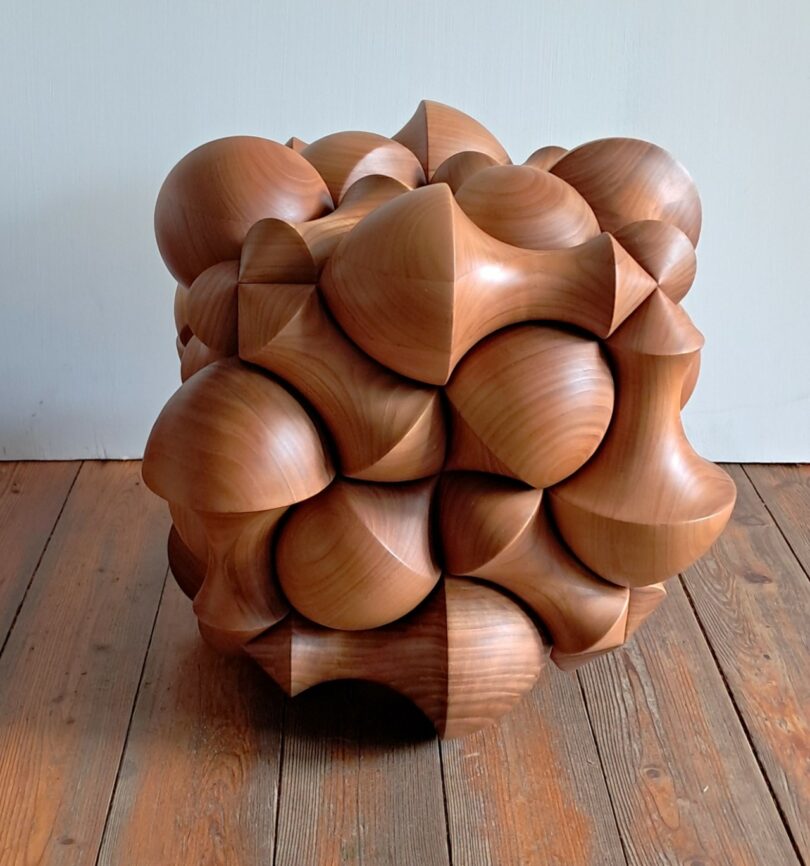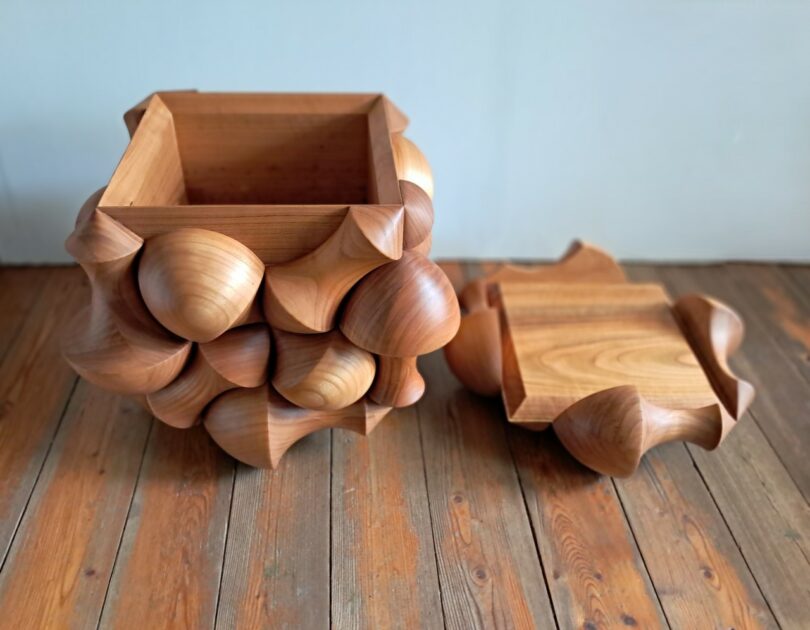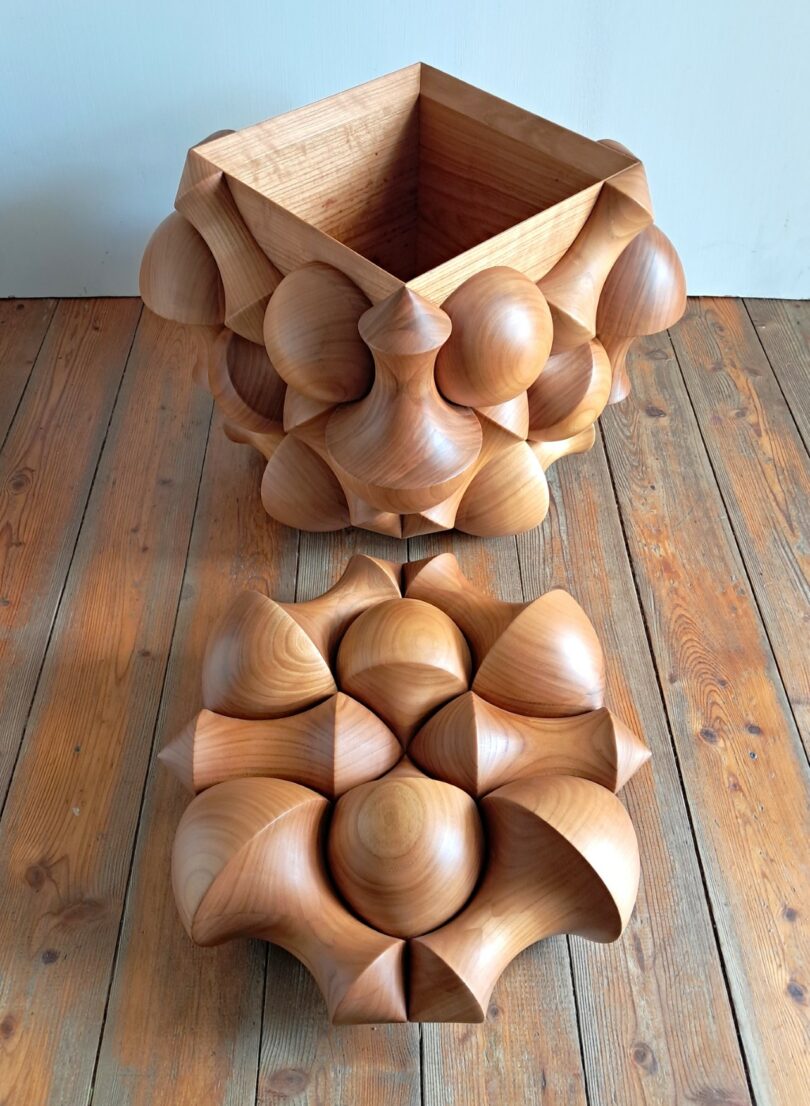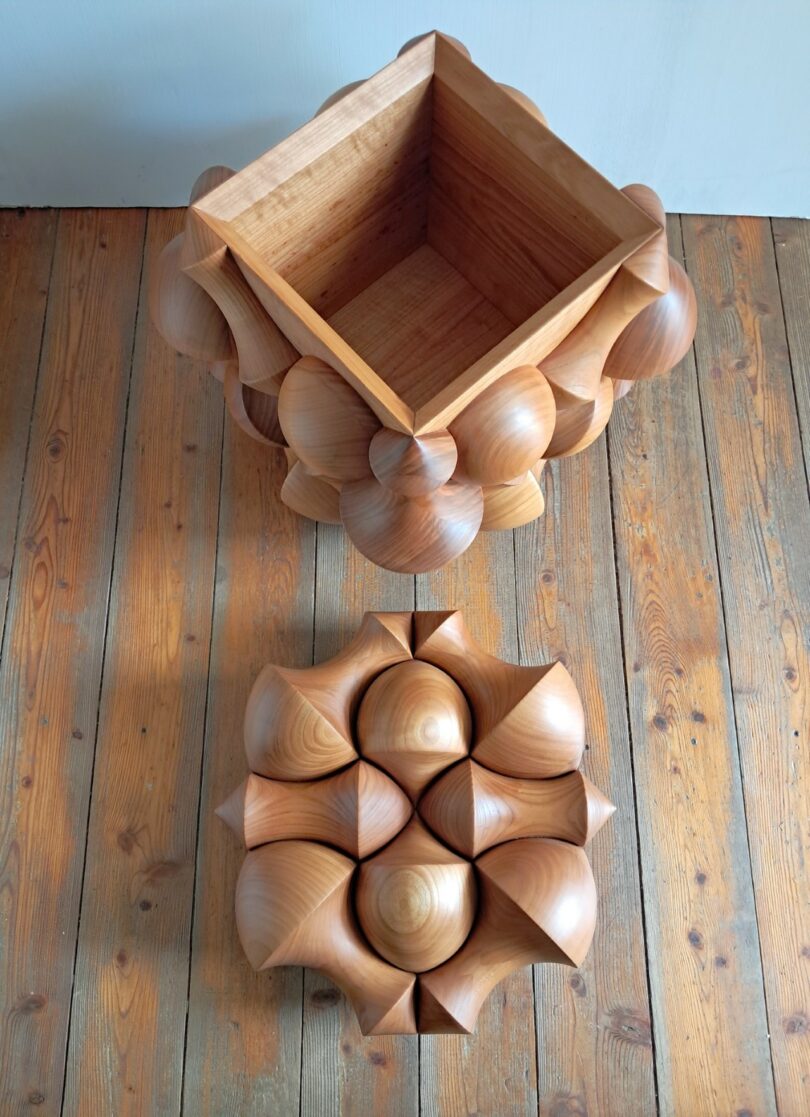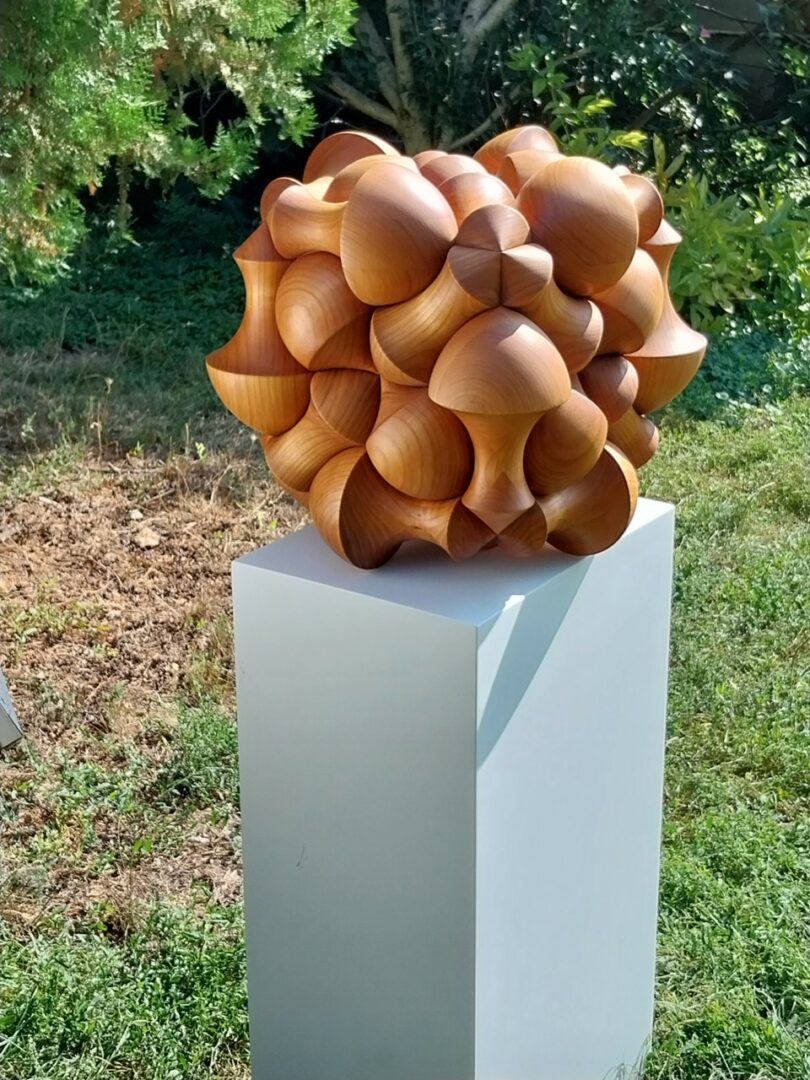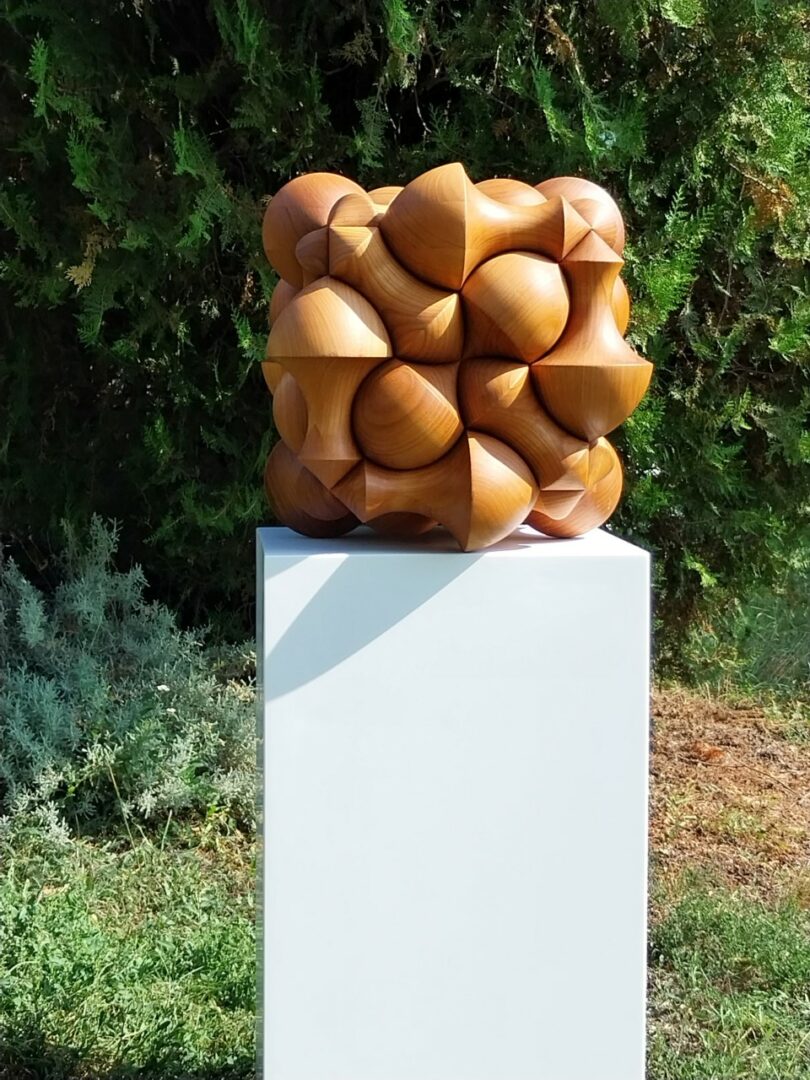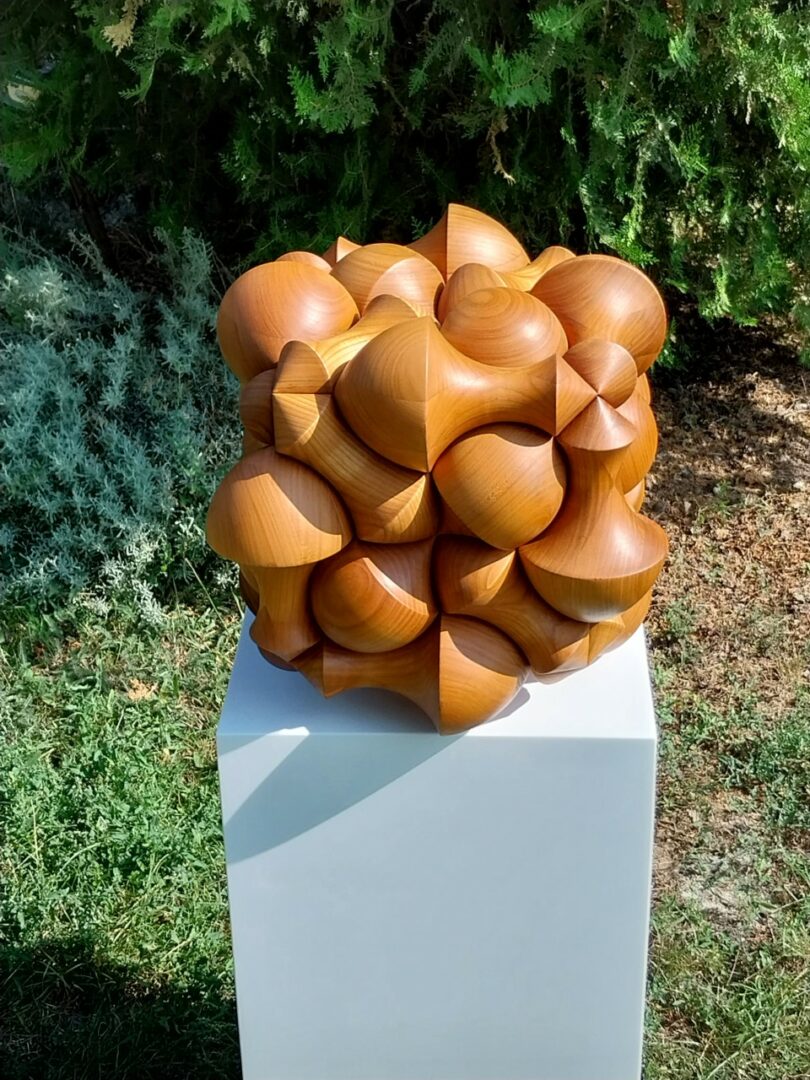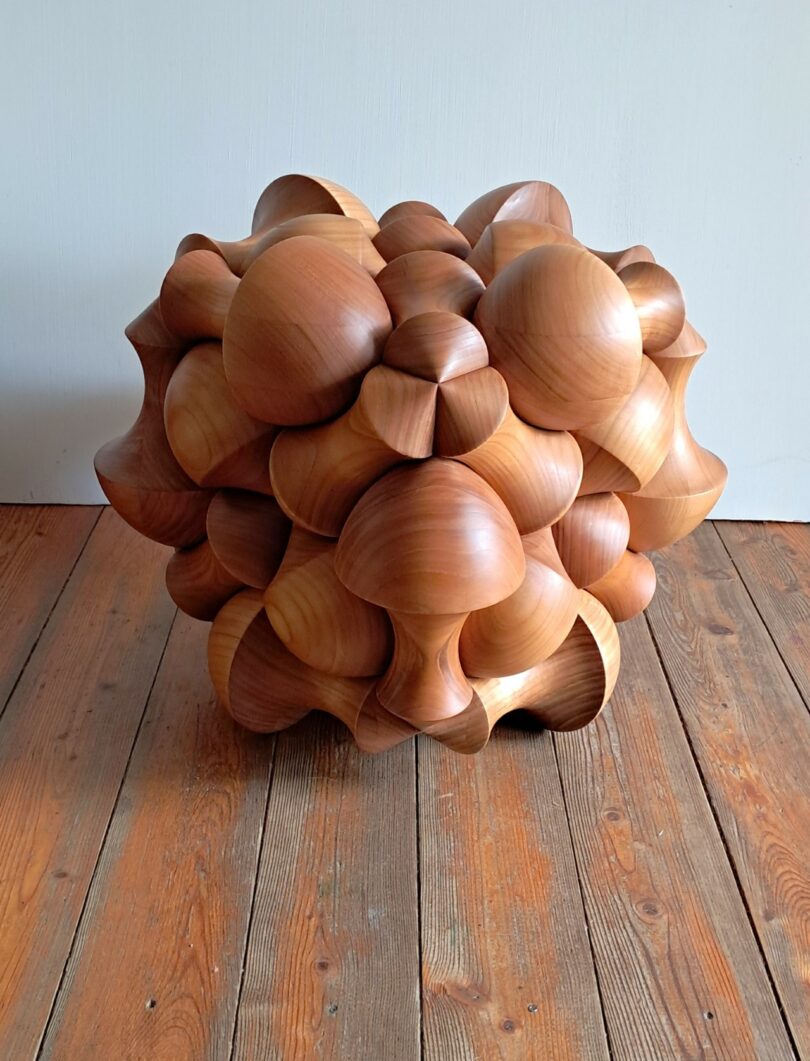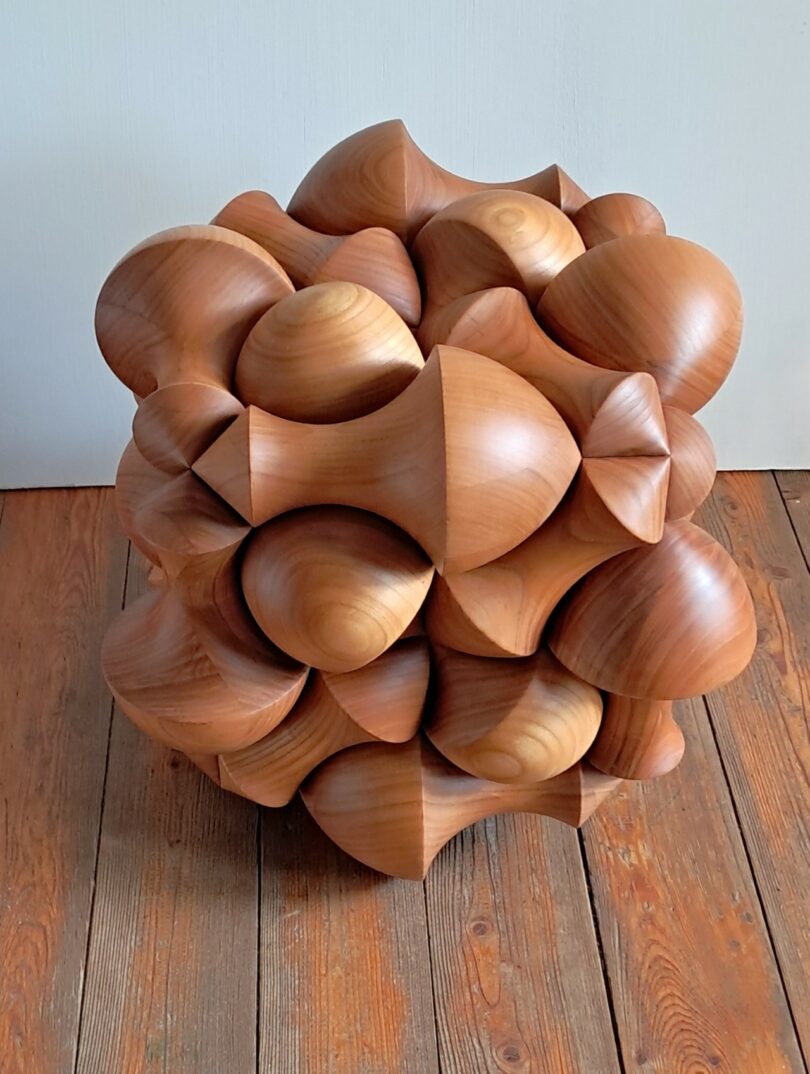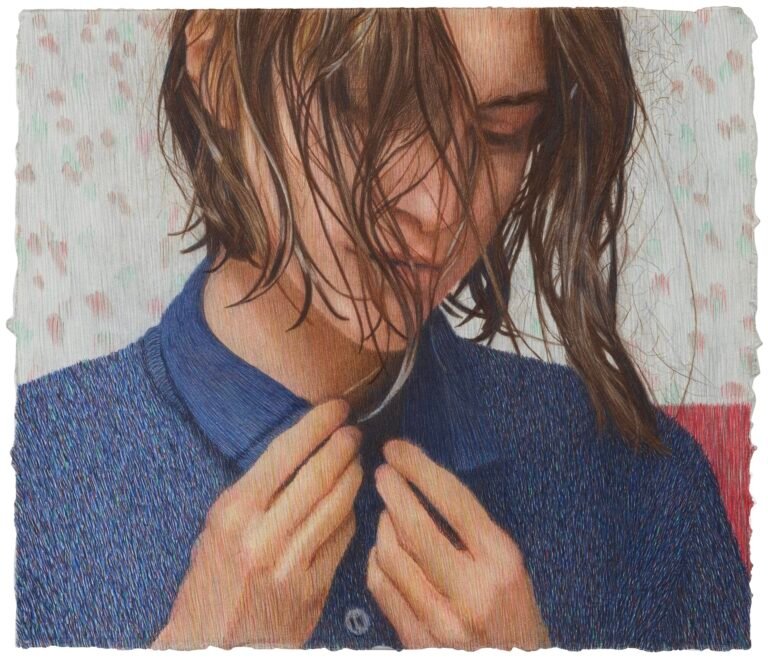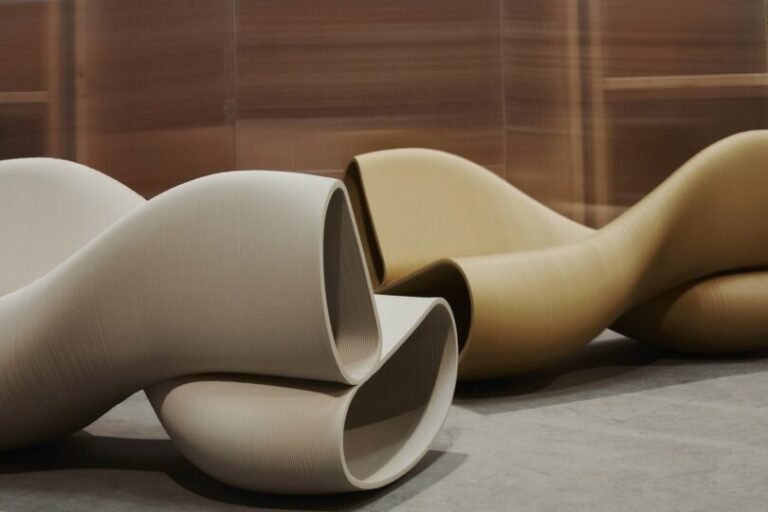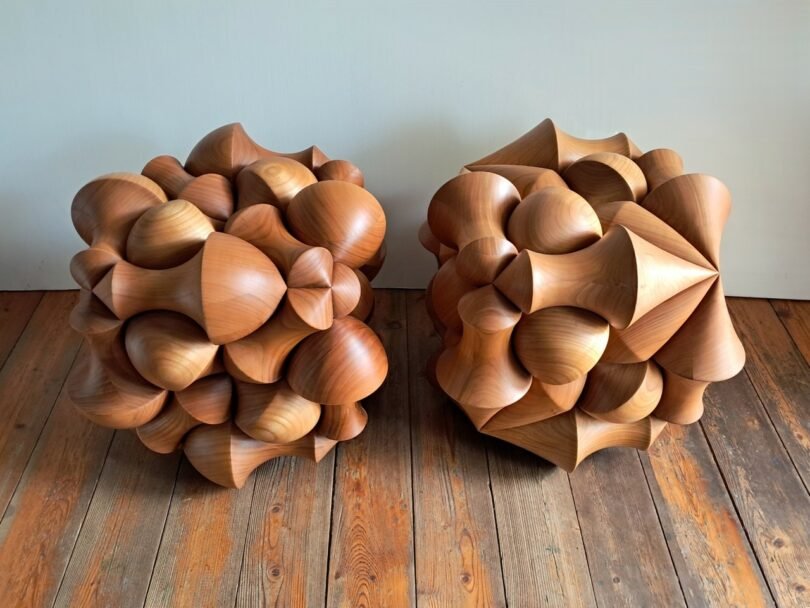
If there’s one thing Hungarian designer László Tompa does best, it’s challenging how we perceive geometry. His latest work, the Illusion Box, blurs the line between sculpture and function. At first glance, it appears to be a seamless wooden object – a mesmerizing grid of curves and intersections that seem to move with the light. But look closer, and you’ll find a hidden compartment concealed within its rhythmic geometry.
Although Tompa is currently focused on his intricate wooden sculptures, his original focus was ceramics and tile design. It was during his experiments with periodic wall tiles, built from triangular and square-based meshes, that the idea for his sculptural boxes first emerged. Seeking to translate these three-dimensional, geometric explorations into a more tactile, volumetric form, Tompa shifted his focus to wood. The material offered both precision and warmth, and opened new possibilities for exploration.
His exploration begins with the sphericon, a solid geometric object composed of two identical surfaces joined seamlessly. After years of experimentation, Tompa discovered that it was possible to create multi-element bodies that retained the same continuous geometry as the original form. These evolved shapes, which mirror themselves when rotated 180 degrees, became the foundation for his sculptural language.
Crafted from cherry wood and built from 36 turned elements that interlock with one another, the Illusion Box transforms mathematical order into a real life optical illusion, concealing hidden storage space within its sculptural grid. Each curved segment is first CNC-cut from 2D templates, then shaped into bespoke wooden revolutions using a copy lathe, a traditional turning tool that allows for precision and repetition. Once formed, each piece is hand-fitted and fixed, creating a seamless composition where no single joint disrupts the flow of the design. The finished product gives no indication of its hidden functionality – only when disassembled can the magnitude of its precision and craftsmanship can be fully appreciated.
The Illusion Box encapsulates Tompa’s ongoing fascination with geometry, perception, and the dialogue between positive and negative space. In his hands, form becomes both puzzle and functional object – a revelation only made when it comes apart at the seams.
To learn more about the Illusion Box by László Tompa, visit laszlotompa.com.
Photography courtesy of László Tompa.
